The St. Stephen's Church and the monastery in the village of Kefar Gamala in Israel.
La Iglesia de San Esteban y el monasterio en la aldea de Kefar Gamala en Israel.
Estas son otras nuevas fotos que tome en mi visita en la aldea de Gamala.( Sony DSC-HX300)
The St. Stephen's Church and the monastery in the village of Kefar Gamala in Israel.
Here are another few photos that I took in my visit at the villaga of Gamala.( Sony DSC-HX300)
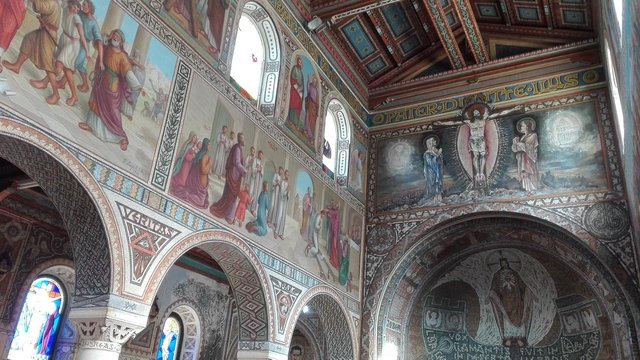
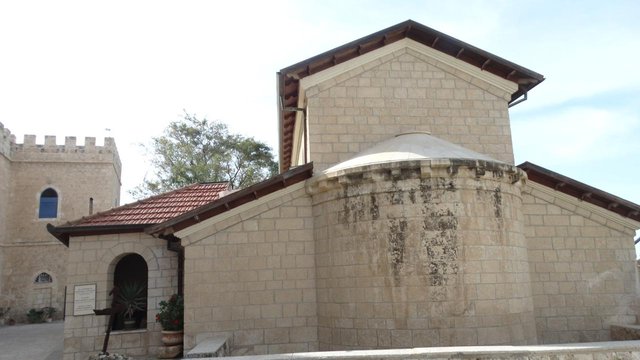
La Iglesia de San Esteban
pertenece a la Iglesia Católica y que forma parte del complejo de Beit Jimal
un monasterio católico dirigido por monjes salesianos cerca de Beit Shemesh en Israel.
La iglesia dedicada a San Esteban está bajo la jurisdicción del patriarcado latino de Jerusalén papa Pio IX (Patriarchatus Hierosolymitanus Latinorum) que fue establecido en su forma moderna en 1847 por el papa Pio IX .
Fue construida en 1930 sobre las ruinas de una iglesia bizantina del siglo V que fue descubierta en 1916. Debe su nombre al primer mártir cristiano que fue apedreado hasta la muerte en Jerusalén en 34-35 DC (Hechos 6-7) y fue enterrado en la aldea de Kefar Gamala. Uno de sus vitrales tiene la inscripción en latín "Crucifixus etiam pro nobis sub Pontio Pilato" que quiere decir "Fue crucificado también por nosotros bajo Poncio Pilato". En el techo a su vez esta otra inscripción que dice "Pater dimitte illis" que quiere decir: "Padre, perdónalos".
The St. Stephen's Church belonging to the Catholic Church and part of the complex of Beit Jimal a Catholic monastery run by Salesian monks near Beit Shemesh in Israel. The church dedicated to St. Stephen is under the jurisdiction of the Latin Patriarchate of Jerusalem (Patriarchatus Hierosolymitanus Latinorum) which was established in its modern form in 1847 by Pope Pius IX. It was built in 1930 on the ruins of a Byzantine church of the 5th century that was discovered in 1916. It owes its name to the first Christian martyr who was stoned to death in Jerusalem in 34-35 AD (Acts 6-7) and was buried in the village of Kefar Gamala. One of its stained glass windows has the inscription in Latin "Crucifixus etiam pro nobis sub Pontio Pilato" that means "It was also crucified for us under Pontius Pilate". On the roof in turn this other inscription that says "Pater dimitte illis" which means: "Father, forgive them".
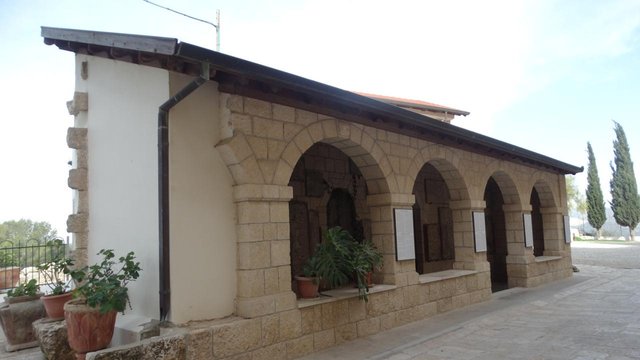
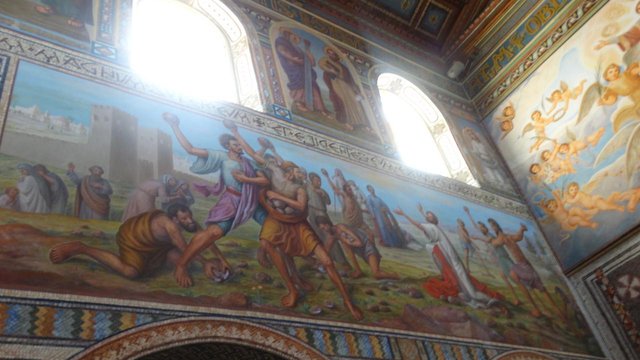
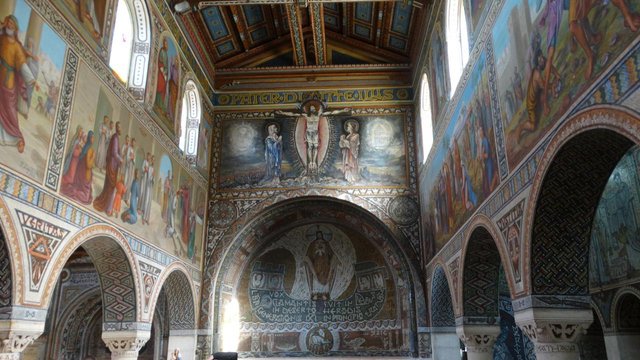
Localización El monasterio está situado en las colinas de Judea al lado de la ciudad de Beit Shemesh a unos 30 kilometros de Jerusalen. hay dos monasterios, uno para hombres y otro para mujeres, así como una pequeña y bien equipada iglesia, llamada de San Esteban.
Localización El monasterio está situado en las colinas de Judea al lado de la ciudad de Beit Shemesh a unos 30 kilometros de Jerusalen. hay dos monasterios, uno para hombres y otro para mujeres, así como una pequeña y bien equipada iglesia, llamada de San Esteban.
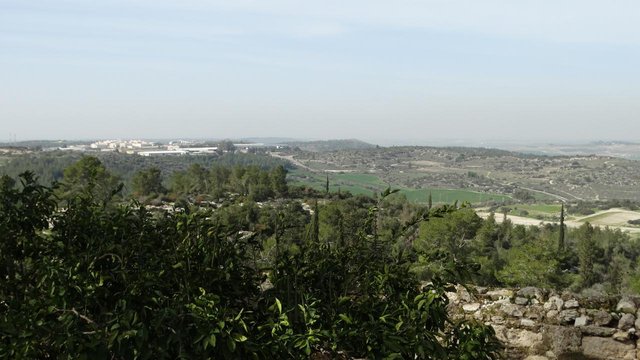
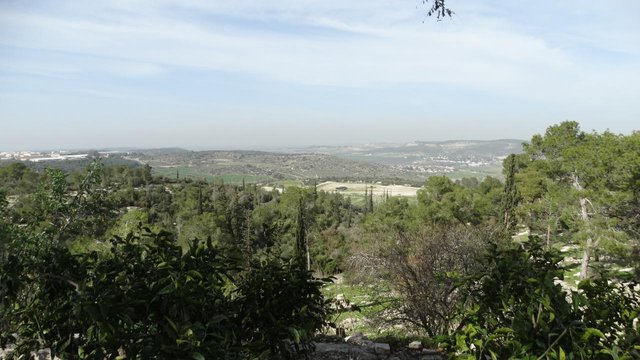
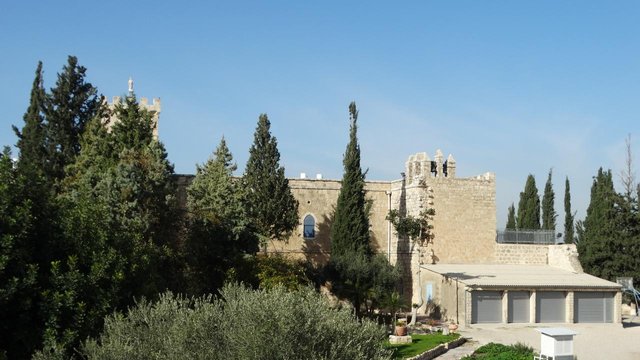
Hay una pequeña sala de conciertos, donde los conciertos se juegan algunos fines de semana. Las monjas no pertenecen a las Hermanas Salesianas, sino a las Hermanas de Belén, parte de las Hermanas de la Asunción de la Virgen y las Hermanas de San Bruno. Estas monjas han tomado un voto de silencio.
There is a small concert hall, where concerts are played on some weekends. The nuns do not belong to Salesian Sisters, but rather to the Sisters of Bethlehem, part of the Sisters of the Assumption of the Virgin and the Sisters of Saint Bruno. These nuns have taken a vow of silence.
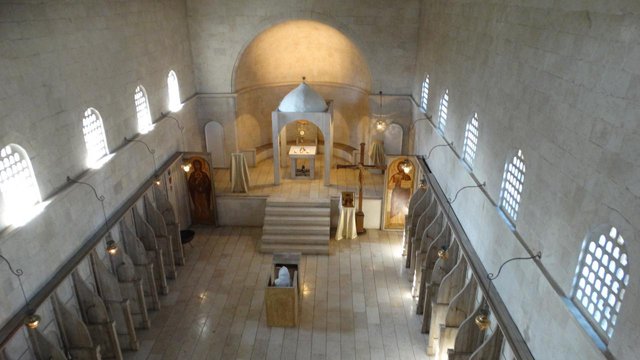
Los sábados y las vacaciones es casi imposible encontrar una plaza de aparcamiento cerca del monasterio de Beit Jamal, cerca de Beit Shemesh. Incluso el sinuoso camino que conduce al complejo monástico a menudo está repleto de automóviles. Esto se debe a hordas de israelíes y turistas que dejan sus vehículos al costado del camino para disfrutar de un picnic bajo olivos y algarrobos en los terrenos del monasterio.
La gente visita Beit Jamal para pasear por el jardín del complejo monástico amurallado, pasear por el jardín o explorar la inusual iglesia y sus antigüedades. Y siempre se puede encontrar a los visitantes hablando con los amistosos monjes salesianos del monasterio o haciendo compras en las tiendas de Beit Jamal.
On Saturdays and holidays it’s almost impossible to find a parking space close to the Beit Jamal monastery near Beit Shemesh. Even the winding road that leads up to the monastic complex is often jammed with cars. That’s because hordes of Israelis and tourists leave their vehicles on the side of the road in order to enjoy a picnic under olive and carob trees on the monastery grounds.
People visit Beit Jamal to wander in the garden of the walled monastic complex, to walk around the garden or to explore the unusual church and its antiquities. And visitors can always be found talking to the monastery’s friendly Salesian monks, or making purchases at Beit Jamal shops.
Los turistas comenzaron a acudir en masa a Beit Jamal varias décadas atrás. Fue entonces cuando, por falta de candidatos, el monasterio dejó de funcionar como escuela para niños árabes desfavorecidos. En cambio, los monjes comenzaron a tomar grupos e individuos que querían pasar unos días en un retiro espiritual.
Casi al mismo tiempo abrieron una tienda que transportaba miel de las abejas del monasterio, aceite de oliva de los árboles del monasterio y vino de uvas cultivadas en sus viñedos y procesados en la bodega del monasterio de Cremisan, al sur de Jerusalén. Unos años más tarde, varias docenas de monjas de la orden monástica que incluye a las Hermanas de Belén, la Asunción de la Virgen María y San Bruno erigieron un convento dentro de las paredes del antiguo monasterio salesiano.
A pesar de que viven vidas casi silenciosas y pasan la mayor parte de su tiempo en oración y meditación, ellos también tienen una tienda en la que venden hermosa cerámica hecha a mano. Los invitados son bienvenidos tanto por las monjas a las que se les permite hablar con extraños como por los monjes de Beit Jamal
Tourists began flocking to Beit Jamal several decades ago. That’s when, for lack of candidates, the monastery ceased to function as a school for underprivileged Arab children. Instead, the monks began taking in groups and individuals who wanted to spend a few days on a spiritual retreat.
At about the same time they opened a shop carrying honey from the monastery bees, olive oil from monastery trees and wine from grapes grown in their vineyards and processed at the Cremisan monastery winery just south of Jerusalem. A few years later, several dozen nuns from the monastic order that includes the Sisters of Bethlehem, the Assumption of the Virgin Mary and St. Bruno erected a convent within the walls of the old Salesian monastery.
Although they live nearly silent lives and spend most of their time in prayer and meditation, they, too, have a shop in which they sell beautiful, hand-crafted pottery. Guests are made welcome both by those nuns permitted to speak to outsiders and by the monks of Beit Jamal.
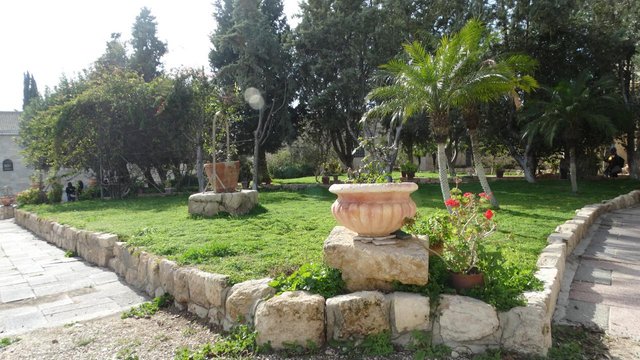
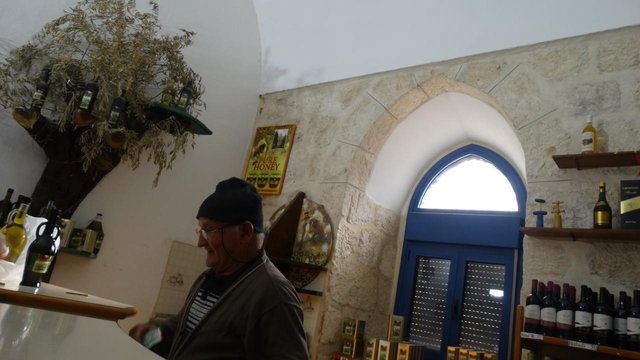
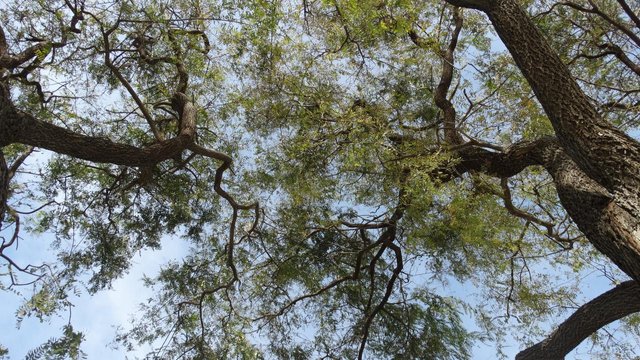
Nice and interesting post, and the photos are absolutely beautiful!
Thank you!!!